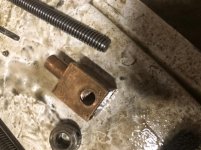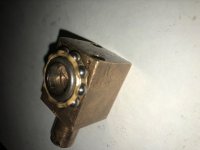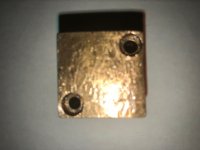I have recently gotten a Pratt and Whitney #3 horizontal mill. There was about 20 thou backlash in the y axis lead screw, so I am looking for a replacement nut. Does anyone have them for sale?
The screw itself looks worn as well. All of the other screws have their trapezoidal acme shape, but this screw has the trapezoids almost worn to a point along the pitch. I might try and machine a new one. Does anyone know where I can acme screws with some material on the end to work with?
Thanks,
-Matthew
The screw itself looks worn as well. All of the other screws have their trapezoidal acme shape, but this screw has the trapezoids almost worn to a point along the pitch. I might try and machine a new one. Does anyone know where I can acme screws with some material on the end to work with?
Thanks,
-Matthew








